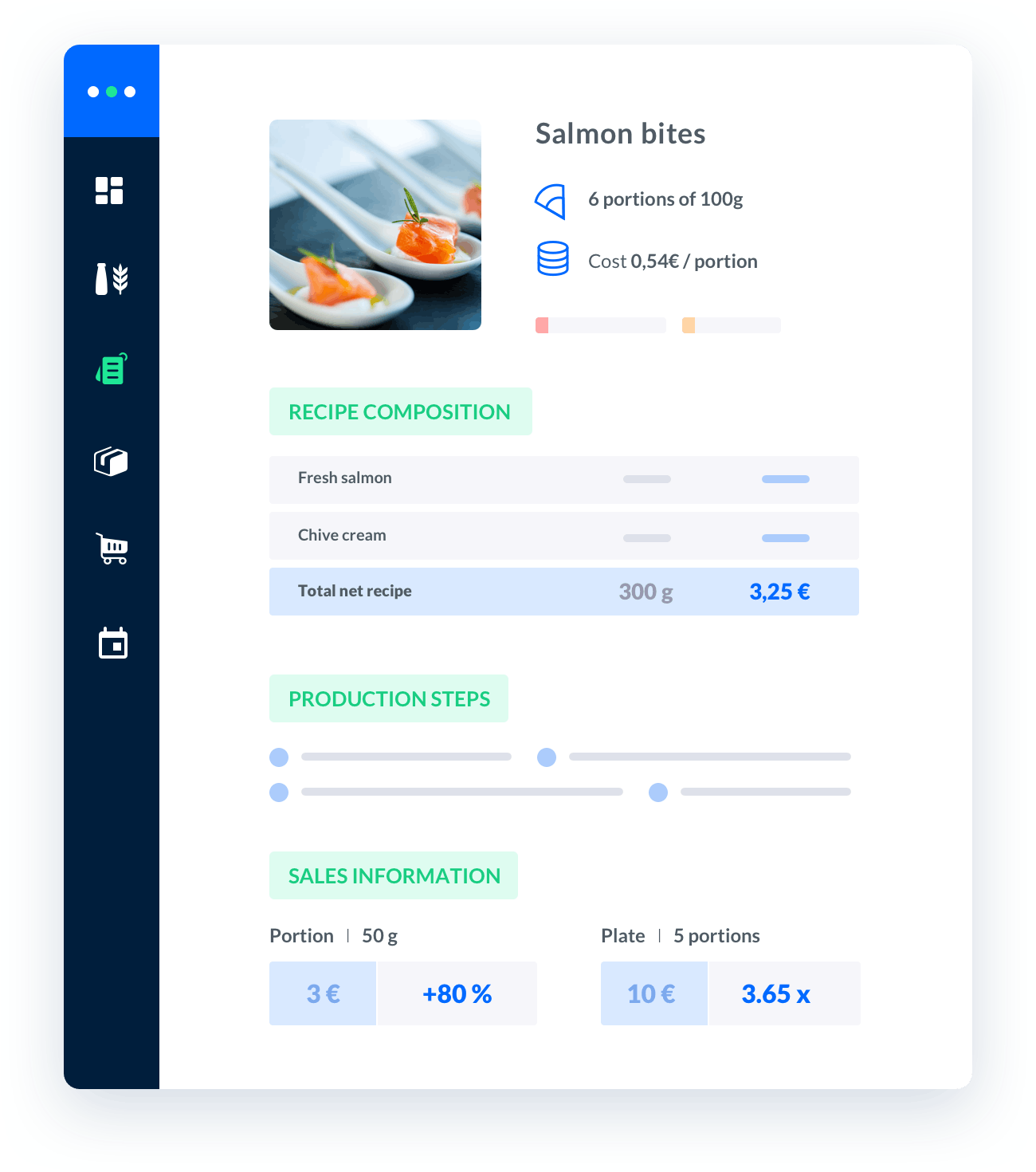food cost spreadsheet google docs
"When it comes to managing the costs of running a food business, having an efficient and organized system in place is essential.One tool that can greatly help with this is a food cost spreadsheet on Google Docs.

Melba: the food cost app to optimize the profitability of your restaurant
Discover how to optimize the profitability of your restaurant with melba

The ultimate guide to food cost restaurant
Learn more about the food cost basis and how to reduce your food cost percentage
When it comes to managing the costs of running a food business, having an efficient and organized system in place is essential. One tool that can greatly help with this is a food cost spreadsheet on Google Docs. With Google Docs, you can create, edit, and collaborate on spreadsheets online, making it a convenient and accessible option for keeping track of your food costs. In this article, we will explore the benefits of using a food cost spreadsheet on Google Docs and provide you with some tips on how to create and utilize one effectively.
Benefits of Using a Food Cost Spreadsheet on Google Docs
A food cost spreadsheet on Google Docs offers several advantages over traditional methods of cost tracking. Here are some of the key benefits:
- Accessibility: With Google Docs, you can access your food cost spreadsheet from anywhere with an internet connection. This means you can quickly check and update your costs even when you're on the go.
- Collaboration: Google Docs allows multiple users to work on the same spreadsheet simultaneously. This is especially useful for businesses with multiple locations or teams, as everyone can contribute to the cost tracking process in real-time.
- Automatic Saving: Google Docs automatically saves your changes as you work, eliminating the risk of losing important data due to unexpected events like power outages or system crashes.
- Data Analysis: Google Docs provides various built-in functions and formulas that can help you analyze your food cost data. You can easily calculate average costs, identify cost outliers, and generate meaningful reports.
Creating a Food Cost Spreadsheet on Google Docs
Now that you are aware of the benefits, let's dive into the process of creating a food cost spreadsheet on Google Docs:
Step 1: Open Google Docs
To get started, open your web browser and navigate to https://docs.google.com. If you don't have a Google account, you'll need to create one to access Google Docs.
Step 2: Create a New Spreadsheet
Once you're logged in, click on the ""Blank"" option to create a new spreadsheet. You can also choose from various pre-designed templates if you prefer.
Step 3: Set Up Your Spreadsheet
Before entering any data, it's important to structure your spreadsheet properly. Here are some key elements to consider:
- Column Headers: Create column headers for important cost categories such as ingredients, quantity, unit price, total cost, and vendor information. This will help you organize and analyze your data effectively.
- Formulas and Functions: Utilize Google Sheets' formulas and functions to automate calculations. For example, you can use the SUM function to automatically calculate the total cost for each ingredient based on the quantity and unit price.
- Data Validation: Implement data validation rules to ensure accurate data entry. For instance, you can set up validation rules to prevent negative quantities or unrealistic prices.
Step 4: Enter Your Data
Now it's time to start entering your food cost data into the spreadsheet. Be diligent in recording all relevant information, including ingredient names, quantities, prices, and vendor details. Accurate and up-to-date data will help you make informed decisions regarding your food costs.
Utilizing Your Food Cost Spreadsheet Effectively
Creating a food cost spreadsheet is just the first step. To make the most out of it, here are some tips for utilizing your spreadsheet effectively:
1. Regularly Update Your Data
Make it a habit to update your spreadsheet regularly. Set aside time each week or month to input new costs and review existing data. This will ensure that your food cost information remains accurate and up-to-date.
2. Analyze and Interpret Your Data
Your food cost spreadsheet can provide valuable insights into your business's financial health. Take the time to analyze and interpret the data to identify trends, cost-saving opportunities, and areas for improvement. Look for patterns in ingredient prices, monitor changes in overall costs, and compare your costs to industry benchmarks.
3. Share and Collaborate
As mentioned earlier, Google Docs allows for easy collaboration. Share your food cost spreadsheet with relevant team members, such as managers or accountants, to ensure everyone is on the same page. Encourage collaboration and discussion around cost-saving strategies and potential areas of improvement.
Conclusion
Using a food cost spreadsheet on Google Docs can be a game-changer for managing the financial aspects of your catering business. It offers accessibility, collaboration, and powerful data analysis capabilities. By following the steps outlined in this article and utilizing the tips provided, you can create an efficient and effective food cost tracking system that will help you make informed decisions, optimize your costs, and ultimately contribute to the success of your business.
"





